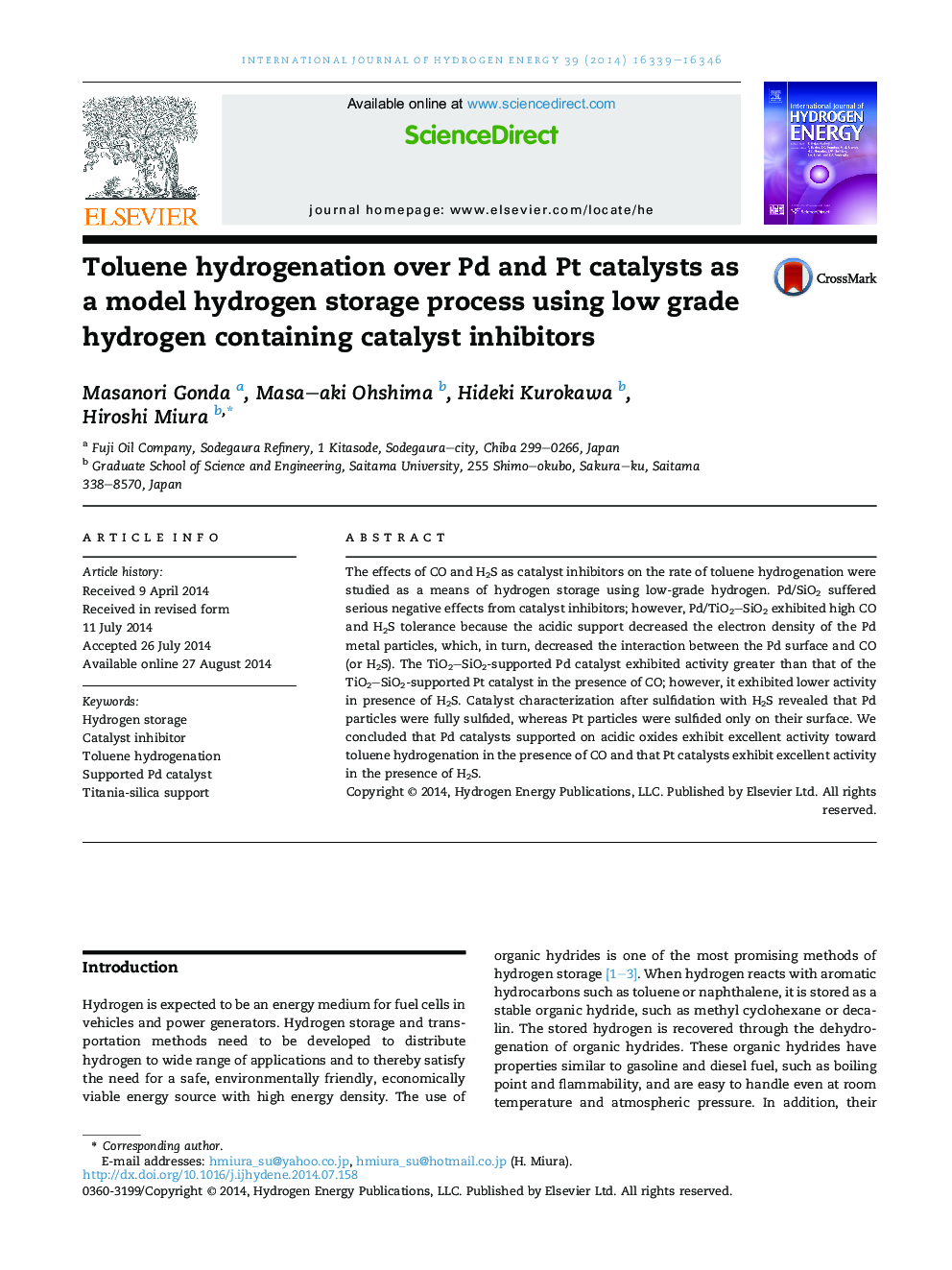| Article ID | Journal | Published Year | Pages | File Type |
|---|---|---|---|---|
| 1280972 | International Journal of Hydrogen Energy | 2014 | 8 Pages |
•Pd/TiO2–SiO2 exhibited high CO and H2S tolerance.•The acidic sites of the TiO2–SiO2 support decreased the electron density of the Pd particles.•Pd exhibited greater activity than Pt in presence of CO, but Pt exhibited greater activity than Pd in presence of H2S.
The effects of CO and H2S as catalyst inhibitors on the rate of toluene hydrogenation were studied as a means of hydrogen storage using low-grade hydrogen. Pd/SiO2 suffered serious negative effects from catalyst inhibitors; however, Pd/TiO2–SiO2 exhibited high CO and H2S tolerance because the acidic support decreased the electron density of the Pd metal particles, which, in turn, decreased the interaction between the Pd surface and CO (or H2S). The TiO2–SiO2-supported Pd catalyst exhibited activity greater than that of the TiO2–SiO2-supported Pt catalyst in the presence of CO; however, it exhibited lower activity in presence of H2S. Catalyst characterization after sulfidation with H2S revealed that Pd particles were fully sulfided, whereas Pt particles were sulfided only on their surface. We concluded that Pd catalysts supported on acidic oxides exhibit excellent activity toward toluene hydrogenation in the presence of CO and that Pt catalysts exhibit excellent activity in the presence of H2S.
